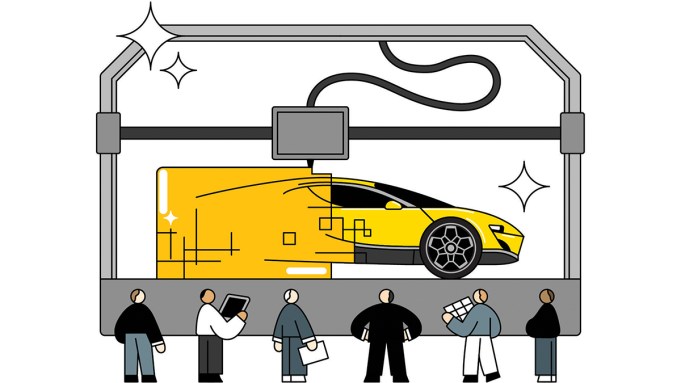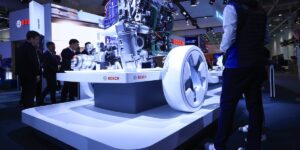From the outside, Bugatti’s new 1,800 hp Tourbillon looks much the same as the outgoing Chiron. Longer, sure, with a more pronounced nose and aggressive fender flares, but not substantially different. Look closer at the suspension, though, and you’ll notice something radical: The control arms and linkages, rather than appearing like typical automotive parts, have a distinctly organic shape—like the skeletal structure of some otherworldly creature built for speed. These key components in the $4 million model were created using bleeding-edge additive manufacturing, more commonly known as 3-D printing.
The technology, which enables pieces to be made directly from raw materials without the use of extensive stamping or tooling machinery, dates to the 1980s, yet only in the past few years has it become sophisticated enough for applications as extreme as the underpinnings for an 1,800 hp hypercar. While there are many different processes, the automotive industry’s commonly adopted approach has become powder-bed fusion using a laser beam (PBF-LB). As the name suggests, a high-power laser is cast onto a bed of powdered metal, fusing the particulate into a solid, with the piece being formed as metallic powder is repeatedly applied and then melted, layer by layer. The resulting components often feature wild—and wildly efficient—shapes that would be impractical or even impossible to achieve via other methods.
Czinger’s 1,350 hp 21C hypercar is extensively built using such technology, which explains why the Southern California–based manufacturer assisted Bugatti with its Tourbillon. The latter’s finished suspension “was 30 percent lighter than the greatest casting you could make and a geometry you just couldn’t cast,” says founder, president, and CEO Lukas Czinger.
Bigger players are also jumping on board. In 2022, a last-minute change forced General Motors to tweak a piece of trim for the Chevrolet Tahoe; instead of waiting months for a traditional solution, GM 3-D printed 60,000 pieces in five weeks. Porsche also explored the process to develop a higher-performance piston for the 911 GT2 RS. “Our simulations show that there’s a potential weight savings of up to 20 percent per piston,” says Frank Ickinger, one of Porsche’s senior engineers. The component’s innovative configuration also helped bump output by 30 hp. Though just for testing purposes in that case, Porsche has brought additive manufacturing to bear with its 3-D-printed bucket seat in the road-going 911 GT3 RS.
For now, low-volume, high-performance applications remain the sweet spot, according to Bugatti president Christophe Piochon, who calls it “a perfect technology” for boutique automakers. But while 3-D printing’s up-front preproduction costs can be lower than that of traditional processes, individual parts cost substantially more when made in this way. Plus, the resulting fit and finish can sometimes be inferior to something that was forged or cast using a high-precision machine.
“I’ve seen very notable custom-car builders utilizing it to cut corners and avoid tooling at the sacrifice of the longevity and quality of the project,” says Jonathan Ward, founder of restomod house Icon, who counts six 3-D printers in his own facility. Ward clearly isn’t concerned about it replacing the human element; rather, he sees its potential as a complement. “We can now 3-D print tools to then hand-form or stamp a sheet-metal component,” he says. “It can improve a product and dovetail with traditional arts at the same time.”
Credit: robbreport.com











